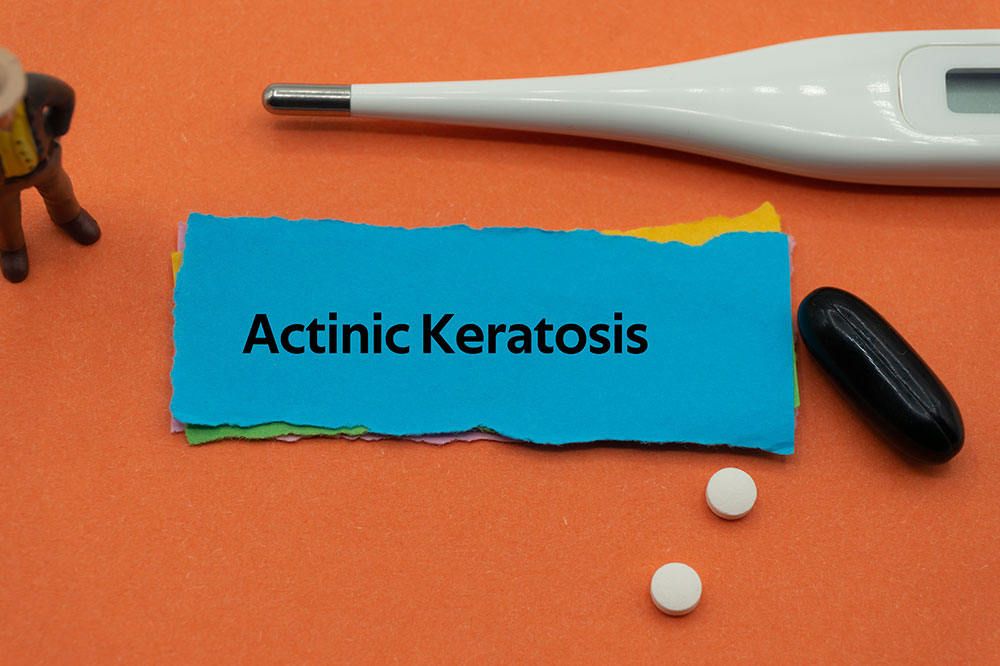
Actinic keratosis – What it is and its management
Actinic keratosis (AK) is a skin condition that results in rough, scaly skin areas. Solar keratosis is another term for AK. Since actinic keratosis is a form of precancer, it can develop into cancer (squamous cell carcinoma) if left untreated. According to research, actinic keratosis affects more than 58 million people in the country. The scaly patches can be of any color but frequently have a crust on top that is yellow or brown.
Symptoms associated with actinic keratosis
Actinic keratosis symptoms might vary, but they often involve rough, scaly, or crusty patches of skin that form on body parts that are frequently exposed to sunlight. For example, the symptoms of actinic keratosis could be skin that is rough, scaly, or crusty, lesions that are flat or hardly elevated on the skin, skin that is brownish, pink, or red, burning or itching in the affected area, and little white or yellow pimples inside the patch.
It is essential to remember that actinic keratosis lesions can be small and easily neglected or written off as a bothersome mole. Yet, since actinic keratosis lesions can turn into skin cancer if neglected, it is crucial to have any problematic skin changes examined by a medical practitioner.
Actinic keratosis causes
Excessive UV (ultraviolet) light exposure is the most common cause of actinic keratosis. The sun or indoor tanning equipment like beds both emit UV rays. UV light can injure keratinocytes, which comprise the top layer of skin.
Diagnosis of actinic keratosis
By carefully inspecting the skin and using magnification, a primary care physician, a dermatologist (a provider specializing in skin conditions), or a healthcare provider can frequently identify actinic keratosis. For example, the healthcare practitioner might suggest a skin biopsy if unsure or the skin appears unusual. Thanks to this quick, minimally invasive process, the skin cells can be examined under a microscope for a precise diagnosis.
Treatment of actinic keratosis
The type and number of actinic keratoses (AKs) patients have determines their treatment choices. A doctor might advise the removal of the skin patches during an appointment visit. They may employ the following methods for the treatment of actinic keratosis:
- A chemical peel resembles a high-end facial mask. During a session, a healthcare provider applies the peel. The treatment’s chemicals securely remove any unwelcome skin growths from the epidermis.
- The doctor might use freezing if the patient has one or two AKs. During this procedure, the doctor will use a cold material, such as liquid nitrogen, to freeze skin growth. These growths will blister and slough off in a few days.
- Before beginning the excision procedure, the doctor numbs the tissue around the AK. The AKs are surgically operated on or scraped, and the wound is stitched back up. The wound typically recovers in two to three weeks.
- The doctor may suggest photodynamic therapy if the patient has numerous AKs or AKs that recur after treatment. This procedure employs creams and specialized light therapy to eliminate precancerous skin cells. While the treated epidermis heals, one must avoid the sun for a few days.
Risks of actinic keratoses
Actinic keratoses can be seen in any individual. However, an individual has a higher chance of risk of actinic keratoses if they have light-colored or blue eyes and red or blonde tresses or have the propensity to get sunburned or receive a lot of sun exposure. Additionally, exposure to sunshine tends to cause freckles or burns. Those who are over 40 years old, live in a warm climate, work outside, or are immunocompromised can get diagnosed with actinic keratoses.
If detected and treated early, actinic keratosis typically doesn’t pose a life-threatening effect.
Ways of preventing actinic keratosis
The best method to prevent actinic keratosis is to stay out of the sun for as long as possible. The epidermis can be shielded by applying sunscreen frequently, at least once every two hours, even in cloudy or wintery conditions. Use a broad-spectrum sunscreen that prevents UVA and UVB rays and has an SPF of at least 30. Limiting time spent in the sun between 10 and 2 when UV radiation is risky. Staying away from tanning beds, sunlamps, and spas can help. Wearing protective apparel from the sun, such as long sleeves, long pants, and hats, is essential.
Home remedies for actinic keratosis
The doctor may advise at-home therapy for those with numerous scaly patches or actinic keratoses (AKs) that are hard to see. Typical at-home treatment entails slathering the face with creams. Eating a well-balanced meal plan can heal skin and help fight skin conditions.
A severe skin condition called actinic keratosis necessitates prompt medical attention. With surgery or topical intervention, most AKs disappear. One can reduce their chance of developing actinic keratosis by shielding their skin from ultraviolet light and the sun. Therefore, speaking to a healthcare practitioner about diagnosis and treatment if they have AK is essential. The earlier one receives therapy for actinic keratosis, the lower their risk of skin cancer.




